Cost to Install Digital Shower
Last updated 3rd April, 2024
Wondering how much to fit a shower? A digital shower?
This article breaks down all the costs involved in fitting a digital shower. From how much to fit a shower, the prices of a digital shower and much more!
Continue reading for more information!
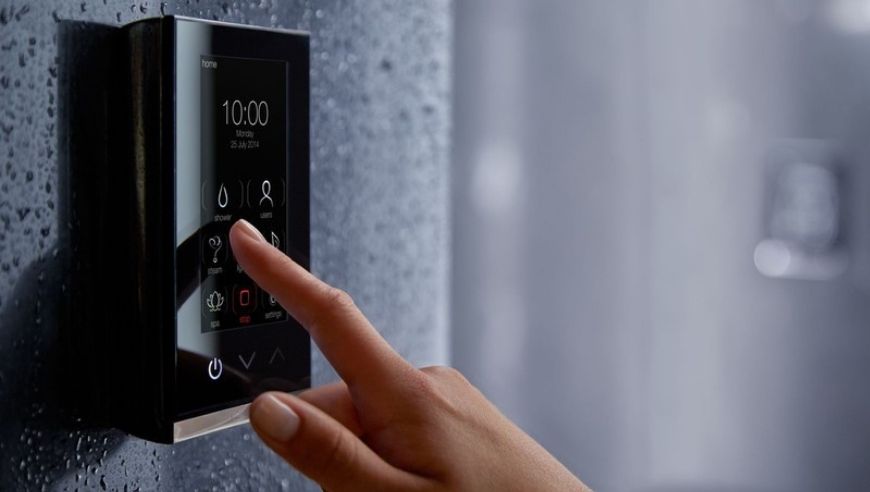
How Much Does Installing a Digital Shower Cost?
The average cost to install a digital shower will depend on the type that you choose and the hot water supply in your home. Most digital showers can be either used with a combination boiler or other high pressure system or with a gravity fed, pumped system.
The addition of the pump will increase the cost slightly. For example, a rear fed single outlet gravity fed digital shower will cost around £450-£800 on average whereas the same shower supplied by a combination boiler will cost between £400-£750.
A dual outlet ceiling fed digital shower supplied by a combination boiler will cost between £500-£1000 and a similar digital pumped shower will cost £550-£1,100.
For the single outlet digital showers there is usually an adjustable shower head that can be moved up or down the riser rail or removed and hand held. The dual outlet systems have a similar adjustable shower head but also a fixed one which is either fitted to the ceiling or the wall.
Both systems will include a controller, most come with a digital display and many are compatible with remote control use. To install a digital shower, it will normally be necessary to employ the services of a qualified plumber.
How much you pay for a plumber will vary considerably according to where you live in the UK. The cost of a plumber in London is approximately £100-£135 per hour and around £45-£65 per subsequent half hour.
In other parts of the country the average rate is approximately £30-£70 per hour with the larger cities being the most expensive. For an experienced plumber, a digital shower system should pose little problem when it comes to installation and although they vary slightly from traditional showers most installations will be straightforward.
Of course, each job will be different and the complexity of the individual project will have an impact on the labour cost. The variation between the different digital showers will be mostly whether they are single or dual outlet and whether they are rear or ceiling fed.
Other than those differences the rest of the system should be familiar to a competent and qualified plumber and present no real obstacle to successful installation.
A digital electric shower is a bit of a misnomer as the two are quite different. A digital shower takes already heated water and blends it with cold remotely and then delivers it to the shower head.
An electric shower uses an integral element to heat the water directly. So, while digital showers are electric in a sense they are different from an electric shower.
Table of Contents
- How much does installing a digital shower cost?
- Labour costs and time frames
- What is a digital shower?
- What does installing a digital shower entail?
- Cost affecting factors of installing a digital shower
- DIY installing digital shower
- Choosing a digital shower
- Benefits of a digital shower
- Building regulations and planning permission for installing digital shower?
- Removing a digital shower cost
- FAQs
- How to find & hire a digital shower installer
- Sources
Digital Shower Prices
Digital shower prices are not inconsiderable but the technology, comfort, and convenience that you are paying for does not come cheap.
Below are some variations of digital showers with average costs and labour prices.
| Type of Digital Shower | Average | Labour | Total |
|---|---|---|---|
| Rear fed single outlet high pressure/combi boiler | £600 | £300-£650 | £900-£1,250 |
| Rear fed single outlet pumped/gravity fed | £625 | £300-£650 | £925-£1,275 |
| Ceiling fed single outlet high pressure/combi boiler | £750 | £300-£650 | £1,050-£1,400 |
| Ceiling fed single outlet pumped/gravity fed | £800 | £300-£650 | £1,100-£1,450 |
| Rear fed dual outlet high pressure/combi boiler | £725 | £300-£650 | £1,025-£1,375 |
| Rear fed dual outlet pumped/gravity fed | £900 | £300-£650 | £1,200-£1,550 |
| Ceiling fed dual outlet high pressure/combi boiler | £700 | £300-£650 | £1,000-£1,350 |
| Ceiling fed dual outlet pumped/gravity fed | £750 | £300-£650 | £1,050-£1,400 |
| Rear fed bath & shower high pressure/combi boiler | £850 | £300-£650 | £1,150-£1,500 |
| Rear fed bath & shower pumped/gravity fed | £950 | £300-£650 | £1,250-£1,600 |
| Valve & controller only | £525 | £300-£650 | £825-£1,175 |
Additional Costs
Many people will consider installing a digital shower system as part of the renovation of their bathroom.
Whether this is in your existing home or part of the refurbishment of an older property the addition of a digital shower can add a modern and contemporary feel to your home.
New Bathroom Suite
Replacing an entire bathroom suite can be a daunting task and not one that you want to repeat too often so it is worth taking the time to future proof it as much as possible.
The addition of a digital shower mixer will go a long way to ensuring that your bathroom is modern and that you have the latest technology.
The cost of an entire bathroom suite will however depend on more than your shower.
The style and quality of the individual items within the bathroom will be reflected in the price that you pay.
The size of your bathroom will also have a significant effect on the overall cost.
For a medium sized bathroom expect to pay between £3,500-£7,500 for a moderate to high quality finish.
Re-Tiling
Of course, you may just want to freshen up your existing bathroom by replacing the current tiles or perhaps just re-grouting those already in place.
This can have a significantly positive effect on the look of a bathroom for a fraction of the cost of replacing the entire suite.
The cost of tiling a medium bathroom from floor to ceiling will cost approximately £800-£1,000 although this will depend on the size and quality of the tiles you choose.
If you only wish to tile around the bath and sink this will reduce to around £400-£600.
Of course, this will all depend on your available budget.
Re-Grouting
Re-grouting your bathroom tiles can uplift your bathroom without all the expense, mess, and upheaval of replacing the tiles.
Whether you re-grout with the same colour or go for a completely new look the visual impact will refresh and revive your bathroom.
The cost of re-grouting tiles in an average bathroom will be approximately £250 for a professional tiler.
Wet Room Installation
You may consider installing a wet room in your home or converting your existing bathroom into one.
Wet rooms are extremely popular and can now be installed in places once thought impossible such as in a loft conversion.
The innovation and technology for wet room installation has improved significantly in recent years and the availability of wet room kits means that they can be installed in a matter of days.
The average cost of installing a wet room will be around £5,000-£7,000 and a digital shower will enhance the feeling of contemporary luxury.
Cost Breakdown Calculator
Individual costs for installing a ceiling fed, dual outlet high pressure digital shower - Total Cost: £1,350
Materials
£675
Labour
£675
Waste Removal
£0
Labour Costs and Time Frames
The cost of labour for the installation of a digital shower will be mostly for the services of a plumber.
Price of Labour
The price that you pay for this will depend on the type of digital shower being installed and your location in the UK.
Prices for plumbers vary between an average of £115 per hour in London with an additional £45-£65 per subsequent half hour. In other parts of the country the average cost of a plumber is around £50 per hour or £250 per day.
How Long Does Installation Take?
How long the installation will take will be determined by a number of factors.
The type of shower being installed and the experience of the plumber fitting it are just two considerations. Some plumbers may not be very familiar with digital showers and what they entail but a qualified and experienced tradesman will be able to follow the manufacturer’s instructions.
So even if they do not fit a lot of digital showers the basics are very similar to the installation of a traditional shower and most professional plumbers will be competent enough to deal with something new. This may mean that the job takes slightly longer but as long as the job is done properly and safely then this should not be an issue.
The timeframe to install a new digital shower system will be between 4-6 hours on average although it does depend on the individual project and the type of shower being fitted.
A single outlet shower may be installed quicker than a dual outlet or a high pressure system fitting may require more commissioning time. Installing the pipework will require a significant amount of time and may take longer than the fitting of the digital shower mixer and controls.
What is a Digital Shower?
A digital shower differs from a traditional shower in the means by which the hot and cold water are mixed together to create the perfect temperature.
In a standard shower when the controls are turned a physical valve controls the flow of the water and alters the temperature.
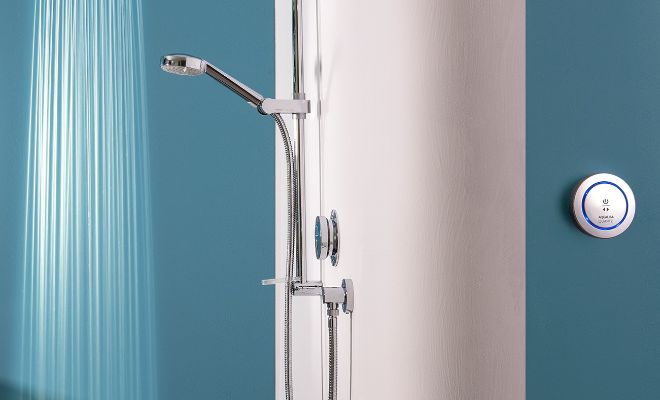
A digital shower has an interface within the shower cubicle which sends a signal to the processor fitted away from the shower and this changes the temperature or the flow of the water.
So rather than a physical operation of the valve within the shower it is a digital and remote one. Most digital showers will continually monitor the flow of the water to ensure a consistent and even temperature is maintained and some will even check this more than ten times a second.
How Long Have Digital Showers Been Around?
Digital showers have been around since 2001 and include innovations such as touch controls, pre-set temperature and flow rates and also remote activation.
The attraction of a digital shower is its ease of operation and ability to set and save a preferred temperature as well as the ability to switch it on without the ‘wet arm’ problem.
Most have LED displays or indicators, usually as part of the controller, that illuminate when the pre-set temperature has been reached and the shower is ready to use.
Variations of Digital Showers
There are two main variations of digital shower, one which can be used with a high pressure system or combination boiler and one which can be used with a gravity fed or pumped system. This means that most households have a hot water supply which can support a digital shower and that there is no special system required.
There are various styles and configurations of digital shower available and which one you choose will be down to personal choice although you do need to consider your hot water source and pipework positioning.
A single outlet digital shower will usually consist of an adjustable head on a riser rail. These can be either rear or ceiling fed and available in both gravity fed and high pressure options so are suitable for most hot water systems.
A dual outlet will also have an adjustable shower head and another fixed head which is often called a rainfall or drench shower head. This is because these are often very large and simulate standing in the rain.
Although the fixed head cannot move they frequently have various settings which you can alternate such as fine spray, vortex spray, etc…
A bath/shower mixer will do exactly what it says, it provides a digital shower over a bath and can also fill the bath with water to a pre-set temperature and often to a pre-set level without the need for additional bath taps. Digital showers offer a precision in water temperature that would be difficult to achieve from a physical mixer valve.
Most come with stylish digital interfaces and LED lighting making them very different in appearance to traditional showers and enhancing a modern feel to a bathroom.
How Does a Digital Shower Work?
In essence a digital shower is not that different to a standard mixer shower. Both require hot and cold water to be mixed together but the digital shower does this remotely by way of a processor and receiver rather than a physical mixer valve.
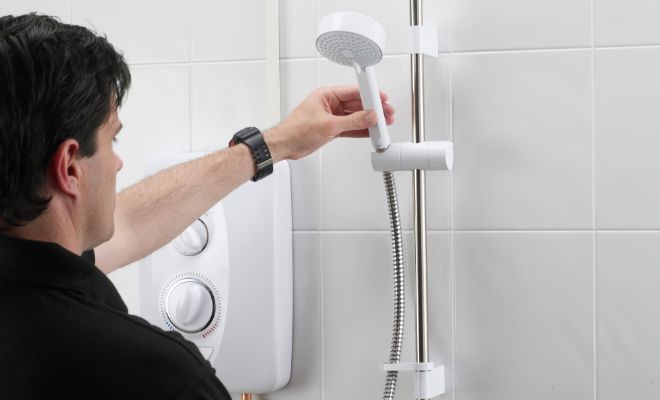
When the control in the digital shower is operated a digital signal is sent via an electrical wire from the interface to the receiver which is installed away from the shower. This allows the change in either temperature or flow rate to be carried out through the processor.
With the control offered by a digital thermostat a digital shower system can attain far more accurate and precise temperatures and prevent variations in the heat of the water.
This is achieved by the almost constant monitoring of the temperature and speed of the digital processor to react to any fluctuations. A common misconception may be that a digital shower is the same as a smart shower.
This is not the case. While a smart shower is digital it offers many features and benefits that a purely digital shower does not. This includes the ability to control the smart shower from an app on a mobile phone, this cannot be done with a digital shower.
What Does Installing a Digital Shower Entail?
The first consideration when installing a digital shower is what type of hot water supply you have in your home.
Which Hot Water System?
Most digital showers are available for both high pressure systems such as an unvented cylinder and for gravity fed systems which consist of a cold water tank which feeds a boiler to heat the water.
The addition of an inbuilt pump to digital showers specified for a gravity fed system means that there is no compromise on pressure and the installation of a digital shower is still possible.
When fitting a digital shower to a high pressure system such as an unvented cylinder it is essential that the supply of both cold and hot water is balanced. This means that the pressure of both hot and cold water supplies should be the same i.e. around 3.5 bar.
If one supply is more than the other then this will make it impossible for the digital shower to blend the two together to get the correct temperature and the system will not work properly.
By passing both the hot and cold water through a combination valve before they reach the digital shower it will be possible to equalise and balance the system. As long as the shower manufacturer’s instructions are followed an unbalanced system should not occur.
Ceiling Fed or Rear Fed
So, when you have identified which type of hot water system you have you will need to decide whether you want to have a ceiling fed or rear fed digital shower installation.
This may depend on the layout of the pipework already in place or the chosen location for the shower.
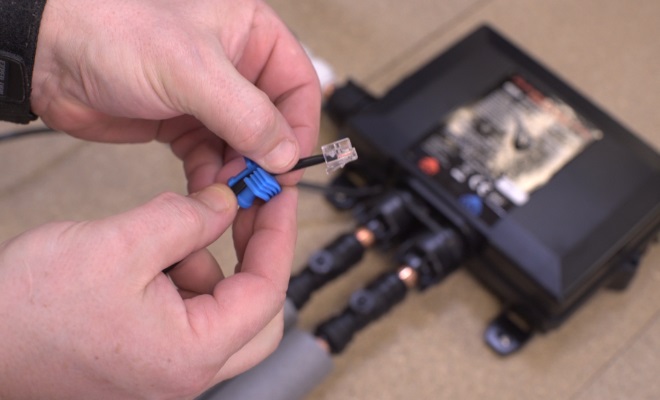
For a ceiling fed shower the pipework can come through the ceiling from the loft but the rear fed showers will need to be supplied through pipework in the wall.
This may involve cutting into the wall and the prospect of re-tiling or re-decoration.
Single or Dual Outlet
Once the technical requirements have been met you can then choose the style of digital shower. Again, there is normally a choice between single outlet, dual outlet, and bath/shower mixers with various shapes of shower head and configurations.
Single outlets consist of just one shower head, usually an adjustable one on a riser. Dual outlets are normally a combination of an adjustable head and another fixed shower head which is typically a large ‘rainfall’ variety.
Bath/shower digital mixers provide an adjustable shower head over the bath and a bath fill mixer. This is normally located where the overflow would be sited and the digital bath fill serves both functions through different pipes underneath the bath.
It fills the bath but also acts as an overflow to prevent water spilling onto the bathroom floor.
Cost Affecting Factors of Installing a Digital Shower
The type of Shower - There are various types and configurations of digital shower available on the market and one of the considerations for most people will be their budget when choosing which to install.
One of the most popular digital shower systems is the dual outlet supplied by a high pressure system such as an unvented cylinder or combination boiler. The average cost of one of these showers is between £500-£1000 while the single outlet will cost between £400-£800.
Concealed or Exposed
For both single and dual outlet digital showers there is also the option of having a concealed or exposed system. A concealed shower has the pipework hidden within the wall whereas the exposed shower will have them on show.
The advantage of the exposed version is that the data cable for the controls can be fed through the riser rail thereby reducing the need to cut into the wall or existing tiles. This makes them more accessible as a retrofit option.
For plumbers this also means that the digital shower can be installed after the tiling has been finished. Previously there would need to be a swapping around of trades with tilers and plumbers taking it in turn to do various aspects of their relevant work.
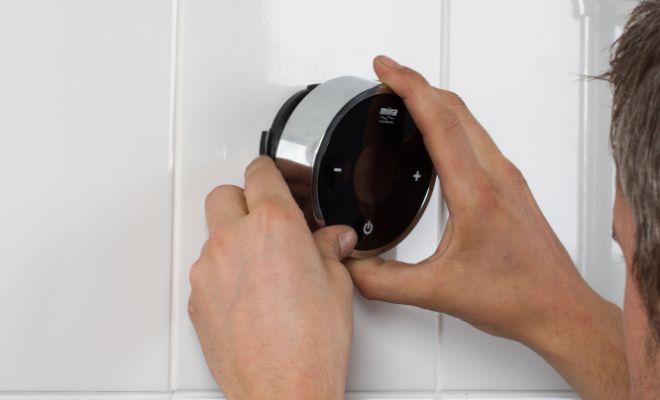
A concealed shower on the other hand involves more work during an installation as the pipework and cabling has to be chased into the wall. This will mean disruption and damage to the existing wall so it is advised that this type of digital shower is suitable as part of an overall uplift or bathroom refurbishment or in a new build property where access is easier.
There is a slight price difference between the cost of the two types with the exposed version being marginally more expensive at around £50-£60 more on average per unit.
Location of Property
Your location within the country will have an affect on the cost of the installation of a digital shower if you are hiring a plumber to carry out the work.
For a plumber in London and surrounding area the hourly rate is approximately £115 per hour with an average of £45-£65 per subsequent half hour.
This compares to around £30-£70 per hour in other parts of the UK and an average cost of approximately £250 per day.
DIY Installing Digital Shower
One of the proclaimed benefits of digital showers is their ease of installation.
This means that they are perfect for DIY installation as long as the instructions are followed. As digital showers are compatible with most water systems there is little or no reason to prevent a DIY enthusiast from fitting one in their home.
Low water pressure also does not preclude installation as most digital showers can be bought as a gravity fed version with an inbuilt pump to boost pressure.
Dangers of DIY
Any DIY work can be dangerous and careful assessment of the job prior to beginning will alert you to anything that you think may require a professional or additional pair of hands.
For direct wiring of the digital shower into a fuse spur as opposed to a transformer and power cable it is advisable to employ the services of a qualified electrician. If you happen to be a qualified electrician as well as a DIYer then this will not be a problem.
Other than the electrical connections the installation of a digital shower is relatively straightforward and well within the scope of most competent DIY enthusiasts. The key is to read the instructions and follow them.
This may seem obvious but a lot of people do not do this and end up with issues following installation that could have easily been prevented with careful reading of the installation guidelines.
How Much Will DIY Installation Save?
If you do carry out the fitting of a digital shower yourself you will save the cost of labour.
For London this could be in the region of £500 and in the rest of the UK approximately £250.
What Tools Are Needed?
People who regularly do DIY in their homes will normally have a well-stocked tool kit and be prepared to tackle most jobs.
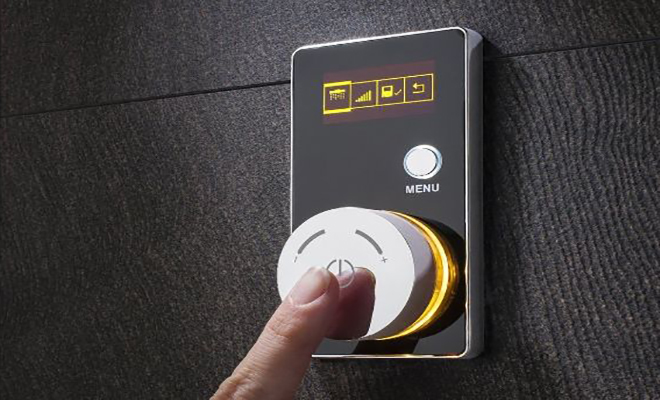
To install a digital shower some basic plumbing skills will be required along with plumbing tools such as:
- Pipe bender
- Pipe cutter
- Soldering gun
- Adjustable wrench
- Drill & bits
- Tape measure
- Pencil
- Screwdriver
Safety Equipment
For safety you should always wear the appropriate personal protection equipment according to the job you are carrying out.
When drilling you should wear safety goggles to protect your eyes and a dust mask to prevent inhalation of dust.
When carrying heavy items wear steel capped boots in case you drop something on your feet and gloves should be worn when cutting pipes to protect your hands.
Building Regulations
Installing a digital shower is not classified as notifiable works and you do not need to inform building control and there are no specific Building Regulations specific to the installation of a digital shower.
Choosing a Digital Shower
Here is a list of different types of digital showers available:
Hot Water System Digital Shower Costs
Your choice of digital shower will primarily be dictated by the hot water system that you have fitted in your home.
The choices are between a high pressure system or a gravity fed system.
High Pressure Digital Shower
The average cost of a high pressure compatible digital shower is £725.
Advantages of a high pressure compatible digital shower:
- ✔ Can be used with combination boilers and unvented cylinders.
- ✔ Consistent water pressure available.
- ✔ For unvented cylinders there will be good flow rate as these systems are only installed in properties with good water pressure.
Disadvantages of a high pressure compatible digital shower:
- ✖ Digital showers for combination boilers may need a hot inlet flow regulator to provide instant hot water especially in winter when mains water is at a lower temperature.
- ✖ Unvented cylinders need to be annually serviced and if not maintained can be dangerous. If the cylinder fails the digital shower will be unusable.
- ✖ Where two showers are fitted in a property with a combination boiler the flow rate will be poor if both are run simultaneously.
Pump Digital Shower
In order to compensate for the lack of pressure in a gravity fed system a suitable digital shower will have an inbuilt pump.
The average cost of a pumped digital shower is £800.
Advantages of a pumped digital shower:
- ✔ As a gravity system has a cold water tank in the event of a cut in water supply there will be a reserve in the loft tank that the digital shower can draw on.
- ✔ A gravity fed system does not need to be serviced annually unlike an unvented cylinder.
- ✔ Inherently safe as the system is vented.
Disadvantages of a pumped digital shower:
- ✖ These digital showers tend to be slightly more expensive than high pressure versions.
- ✖ Even with the addition of a pump the water pressure may never match that of an unvented cylinder.
- ✖ Running more than one shower at a time would be difficult even with shower pumps fitted.
Ceiling Fed and Rear Fed Digital Shower Costs
Whether the digital shower is supplied with water and power from the ceiling or the wall may depend on the existing pipe work or personal preference.
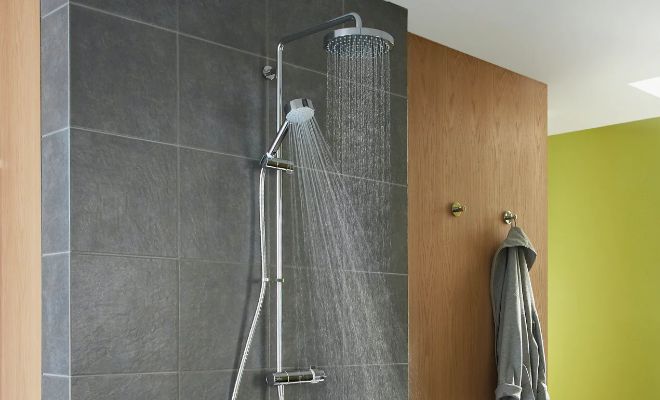
Ceiling Fed Sigital Shower
The average cost of a ceiling fed digital shower is £745.
Advantages of a ceiling fed digital shower:
- ✔ The digital control box can be located in the loft and the pipework can be easily fed from there to the shower head.
- ✔ Aesthetically a ceiling fed fixed shower head looks neater and more modern.
- ✔ Accessing the pipework and digital control box from the loft may be easier.
Disadvantages of a ceiling fed digital shower:
- ✖ If there is not a lot of room to manoeuvre in your loft it may be difficult to access for installation or future repair.
- ✖ Any leaks may cause damage to the ceiling area.
- ✖ If not adequately insulated the control box and pipework could be damaged by freezing temperatures.
Rear Fed Digital Shower
A rear fed digital shower has the pipework for the water supply coming from the back of the shower.
The average cost of a rear fed digital shower is £740.
Advantages of a rear fed digital shower:
- ✔ Suitable for solid, stud partition, dry lined and shower cubicle walls.
- ✔ Ideal for new build or renovation with unobstructed access to the wall for pipework.
- ✔ No need for climbing into the loft for installation or maintenance.
Disadvantages of a rear fed digital shower:
- ✖ Retro fitting a rear fed digital shower may mean the wall will need to be retiled or redecorated after fitting.
- ✖ Future access may be more difficult for pipework enclosed within the wall.
- ✖ Leaks may be potentially hidden until surface damage is visible.
Number of Outlets
The number of outlets for your digital shower refers to the number of shower heads fitted.
Single Outlet
A single outlet means one, usually adjustable, shower head whereas dual outlet refers to two heads, one adjustable and one fixed.
The average cost of a single outlet digital shower is £685.
The advantages of a single outlet digital shower:
- ✔ Adjustable shower head can be moved to suit different user heights making it ideal for families.
- ✔ Comes with several different spray modes in one shower head.
- ✔ Flexible shower hose makes cleaning the shower cubicle or bath easier.
The disadvantages of a single outlet digital shower:
- ✖ Adjustable single outlet shower heads are limited in size unlike fixed heads.
- ✖ Single outlet does not offer the same flexibility of use as a dual outlet digital shower.
- ✖ Aesthetically a single outlet does not have the same visual impact as a dual outlet system.
Dual Outlet
Dual outlet digital showers have a fixed, and usually large, pan head as well as an adjustable shower head.
The average cost of a dual outlet digital shower is £770.
The advantages of a dual outlet digital shower:
- ✔ Flexibility for using either one of the outlets or both together.
- ✔ Combination of various spray options from either outlet for maximum comfort.
- ✔ Ability to divert water flow from one outlet to the other at the touch of a button.
The disadvantages of a dual outlet digital shower:
- ✖ Two shower heads to keep clean and scale free.
- ✖ Large fixed shower heads can be difficult to reach for cleaning and maintenance such as descaling.
- ✖ More expensive than single outlets due to additional parts.
Digital Bath Fill and Shower
A digital shower with a bath filler incorporates a digital shower with an additional digital bath mixer without the need for bath taps.
The average cost of a digital bath fill and shower is £900.
The advantages of a digital bath fill and shower:
- ✔ Combines convenience of a digital shower with the luxury of a bath.
- ✔ Temperature of both shower and bath can be pre-set and customised.
- ✔ No need for taps so achieves a clean and minimalist look.
The disadvantages of a digital bath fill and shower:
- ✖ Expensive compared to bath taps and separate shower.
- ✖ Difficult to fit retrospectively.
- ✖ May not be suitable for gravity fed or low pressure systems.
Benefits of a Digital Shower
There are several benefits to installing a digital shower from convenience to saving water as well as the comfort and luxury they offer.
Controllability
The ease with which a digital shower can be controlled and operated make it very appealing to most people.
From the ability to pre-set preferred temperatures and even shower durations along with remote functioning it is not surprising that they are so popular.
Not only are the controls easy to understand and operate but they also incorporate a safety feature with LED lights to let you know when the correct temperature has been reached and a safety cut out in the event of loss of water supply.
Remote activation from outside the shower removes the need for rapid withdrawal of your arm after switching on the water and for en-suite showers even turning it on by remote control from your bed.
Precision
A physical shower valve blends hot and cold water together to achieve a comfortable temperature but a digital shower can do this in a much more accurate and precise way.
Some models will test the temperature of the water up to ten times per second to maintain the perfect heat.
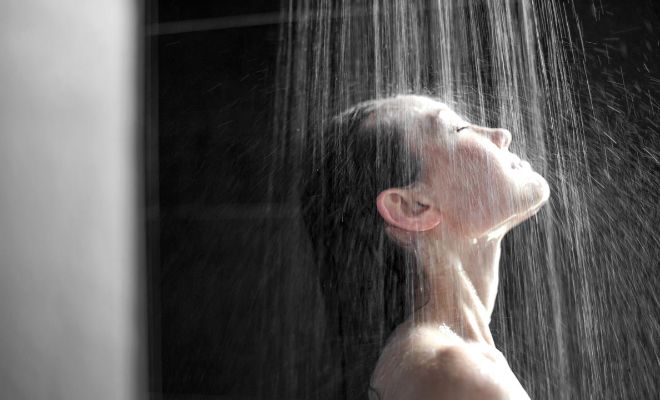
This precision is also utilised for the safety feature of cutting the shower if there is a drop in water pressure to prevent scalding or an unexpected cold shower.
This monitoring by the digital shower of the temperature make it very safe for the young and elderly.
Time Saving
Features such as remote control activation and LED displays for indicating when your required water temperature has been reached means there is no waiting by the shower or tweaking the thermostat.
In an age where everyone is in a hurry and time is the most precious commodity this is an attractive benefit.
Modern
Digital showers are undeniably modern in both their technical and practical qualities.
The ability to save water by utilising the ‘eco’ settings means that they also reflect the present day awareness to conserve natural resources.
Many models have timers to limit the duration of a shower, some have specific spray patterns which utilise up to 30% less water and others will dim the display lighting in ‘eco’ mode.
The sleek and minimalist appearance of most digital showers fits well into modern and contemporary bathrooms giving a sense of luxury and comfort.
Building Regulations and Planning Permission for Installing Digital Shower?
While there are no specific Building Regulations to be met for installing a digital shower Approved Document G deals with sanitation, hot water safety and water efficiency.
In particular attention should be paid to the prevention of excessive temperatures of hot water supply and prevention of scalding by installers.
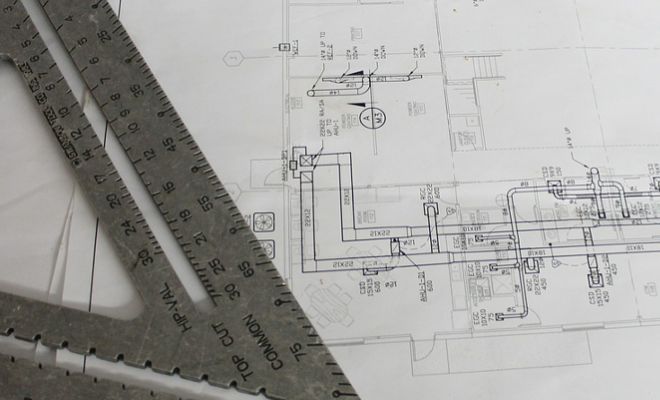
Planning permission is not required for the installation of a digital shower and it is not notifiable to Building Control.
To find information on Building Regulations you can visit the government website or the Planning Portal.
Removing a Digital Shower Cost
Digital showers have been around for quite a while, in fact the first digital shower went on the market in 2001.
If you have an older model fitted in your home you may want to remove it or replace it with an upgraded model.
Labour Cost to Remove a Digital Shower
The cost to hire a plumber to remove a digital shower from your bathroom will depend on where you live in the UK, how complex the removal will be and whether it forms part of a larger project such as a bathroom refurbishment.
The average hourly rate for a plumber in London is £115 per hour with a subsequent charge of around £45-£65 per half hour.
This rate is lower in other parts of the country at an average of between £30-£70 per hour.
If you just want the digital shower removed as a one off job then you may be quoted a fixed price for this service.
As with installing a digital shower it is worth getting at least three different quotations to ensure you are paying a fair price.
Disposal of a Digital Shower
If you do hire a plumber to remove a digital shower then it is likely that they will be happy to dispose of it for you. You can also enquire with your local authority’s recycling centre if they will take it.
A digital shower should not cost anything to dispose of especially in your local recycling centre but a plumber may add a small charge to do so.
DIY Removal of a Digital Shower
If you are a competent and confident DIY enthusiast there is no reason why you cannot remove a digital shower yourself.
Basic plumbing skills and a knowledge of how it comes apart safely should be sufficient to allow you to do the job yourself.
FAQs
Many come with a two to five year guarantee.
This control box mixes the hot and cold water supplies to the required temperature before delivering it to the shower head.
The information is sent via a wired or wireless connection between the two.
A traditional shower mixes the hot and cold water supplies through the operation of a physical valve within the shower when the controls are turned manually.
Many digital showers do not need to be directly wired into a fuse spur but use a power lead and transformer which can simply be plugged straight into a socket. In most cases an electrician is not needed.
The difference is that a digital shower uses a digital processor and remote activation via switches located away from the shower to control it.
A smart shower can be activated by voice, operated by a mobile phone app and includes features such as a water saving proximity sensor that reduces the flow if you step away from the shower.
There are even tutorial videos available online for specific digital shower makes and models with step by step guidance.
It is important that the appropriate type of digital shower is used with the hot water system that is installed in your property.
How to Find & Hire a Digital Shower Installer
If you want to hire a plumber to install a digital shower in your home you should look for one who has experience of installing them.
Although they are similar in some ways to a traditional shower there are important differences which an installer should be familiar with.
Hiring a Digital Shower Installer
Personal recommendation is a good start especially if you can view the work that they have carried out and speak to their client about the process, finished product and any post installation service.
When you are looking for a tradesperson to carry out work in your home it is always a good idea to look for someone who has been in business for more than five years preferably with a business premises and who has a good reputation.
Experience
They should be knowledgeable about the work you require and be able to explain what is involved, how long it will take and be able to make recommendations for the best way to complete the project.
Be wary of someone who dodges questions about specifics of the work but be aware that all jobs are different and sometimes definite answers cannot be given until the tradesperson begins the job.
Insurance and References
References and proof of previous work can be requested if you are unsure and of course all tradespeople who work in or on your home should have adequate insurance.
These include public liability insurance in case of damage to property or injury caused to someone on site and professional indemnity insurance to protect against bad workmanship or failure to complete the job.
Qualifications
Most plumbers will have served time as an apprentice and gained most of their experience on the job However the minimum qualifications of an NVQ or City & Guilds would be expected as far as qualifications are concerned.
Although not required for the installation of a digital shower accreditation with the Chartered Institute of Plumbing and Heating Engineering (CIPHE) or one of the competent person schemes for plumbers will give you peace of mind.
Sources
https://www.drench.co.uk/blog/buying-guides/why-a-digital-shower-is-the-only-choice










